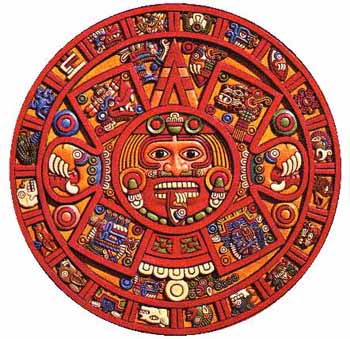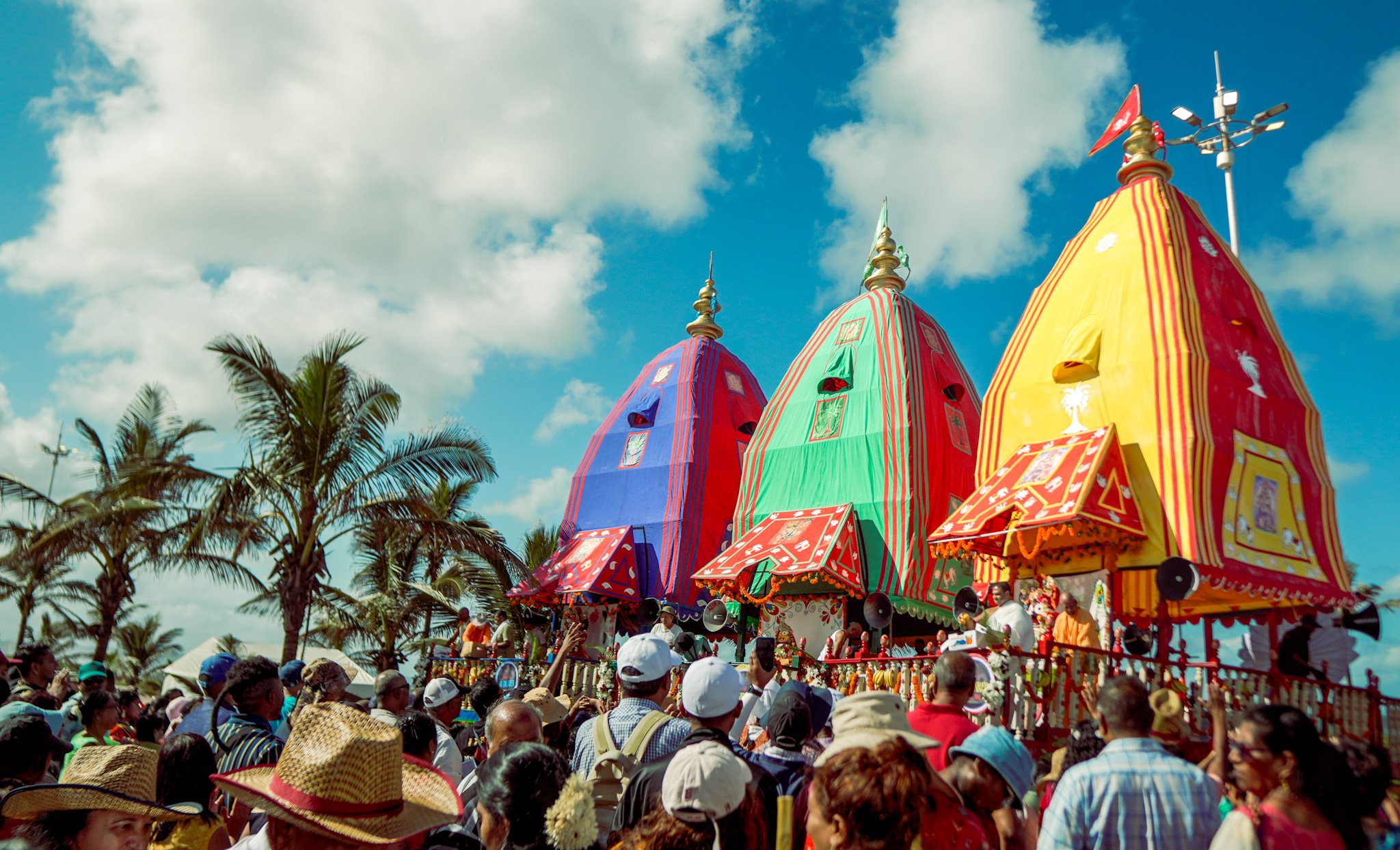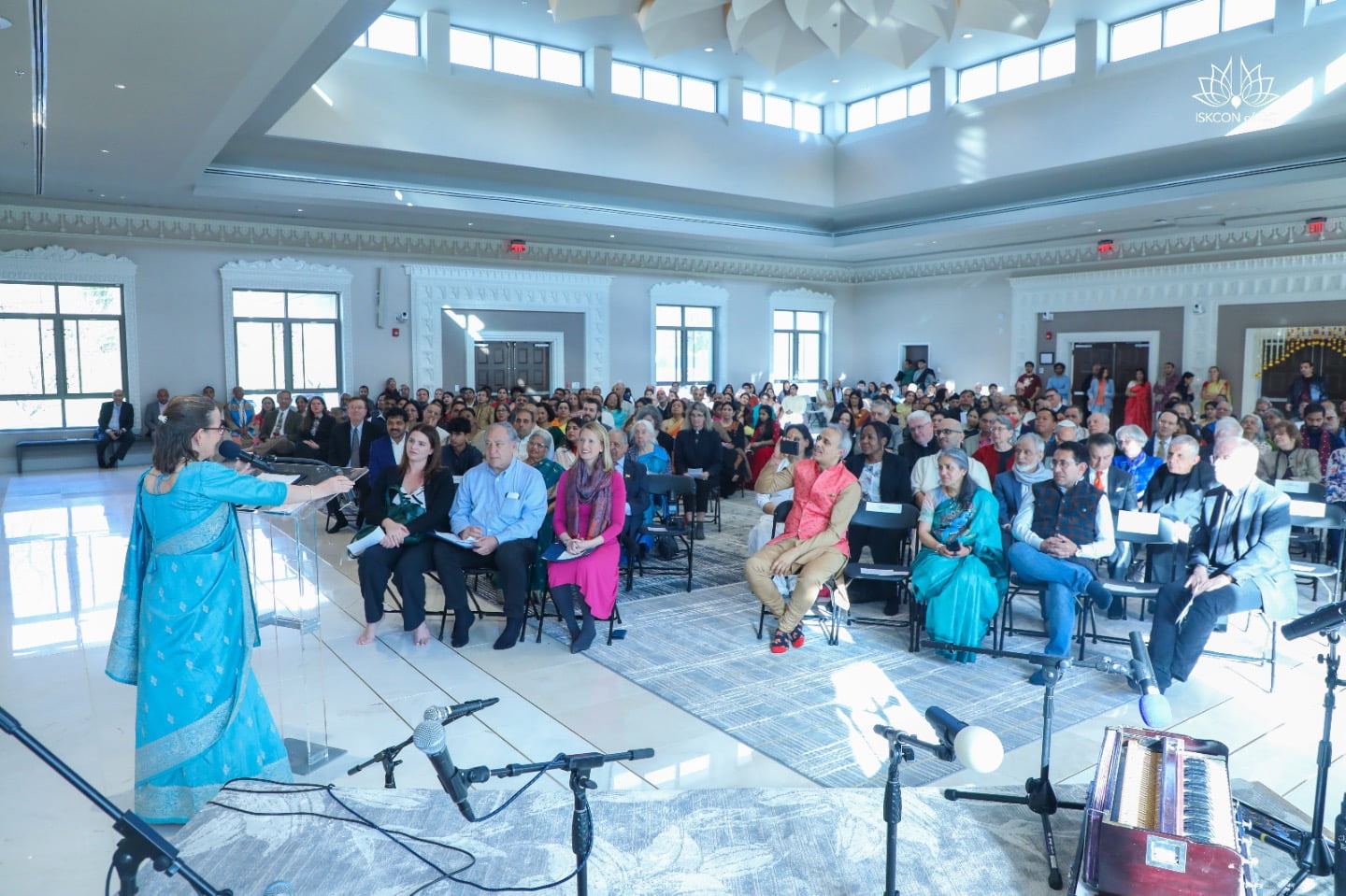On the Maya Prediction: An Evolution in Consciousness
By Ravindra Svarupa Das (BCS) | Jan 21, 2012

“Watch your thoughts, for they become words, Watch your words, for they become actions, Watch your actions, for they become habits, Watch your habits, for they become character, Watch your character, for it becomes your destiny.” (Unknown source)
Are we not questioning, especially at the beginning of a new year, “What does my destiny hold for me? I wonder what the New Year holds for me.”
At the base of such questioning lies the fear that our experience of continued prosperity will be interrupted or, worse, stop!
So when we hear about earthly predictions like the ones derived from the Mayan calendar we become confused, perturbed, fearful. Neither are the many predictions consistent.
MAYAN CALENDAR PREDICTIONS
Some Maya authors and scholars say that the world will end in 2012, some say that the calendar goes on into 4 000 AD, some say the calendar is incomplete and still some say the calendar marks a shift in consciousness. As prolific as the discourse on the Mayan calendar is, for the most part they remain interpretations of scholars; and not authoritative statements.
So how do we receive these predictions in our daily lives, in our pursuit for peace and prosperity? How do these predictions affect our destiny?
When requested by the NBC Television Network to provide information on millennium prophecies, Bhakti Tirtha Swami responded, “..all prophecies are somewhat secondary to the Vedic prophecies …They are reliable and authentic because several of the prophecies in the Vedas are given to humanity by God or by his specially empowered, fully realized ambassadors…”
VEDIC PREDICTIONS
According to Vedic chronology we are in the current time cycle referred to as Kali-yuga, the age of the mode of ignorance, which has a time span of 432 000 years. We have already moved 5 000 years into this time cycle. This age is characterized by personal and earthly disturbances. The behavior of the people of
the age of ignorance is described in Srimad Bhagavatam (quoted in Devamrita Swami, 2007:342-343) in the following way, “Religion, truthfulness, cleanliness, tolerance, mercy, duration of life, physical strength, and memory will diminish day by day because of the powerful influence of the Age of Kali..When there is a predominance of cheating, lying, sloth, sleepiness, violence, depression, lamentation, bewilderment, fear, and poverty, that age is Kali, the age of the mode of ignorance…” This is one of the many descriptions of our conduct and experience in the current age of Kali.
When seen in the light of Vedic predictions, astrologers’ predictions about natural disasters and disturbances become unsurprising and undisturbing to us. They have already been foretold at least 5 000 years ago to be the result of our choices and habits. Similarly the seemingly, contradictory interpretations of scholars of the Mayan calendar becomes easily synthesized within the framework of Vedic predictions. Therefore, when the many interpretations of the Mayan calendar predict a shift in consciousness, we use it as an incremental prod or shove to develop destinies in the right direction.
However, within the dismal age of Kali is embedded a Golden Age. In the ancient Vedic text, Brahma-vaivarta Purana, Krishna tells Ganga Devi that there will be a Golden Age within the Kali-yuga that will start 5,000 years after the beginning of the age of Kali-yuga. It will last for 10,000 years. We are considered to be in the first phase of this Golden Age.
The Golden Age is similar to the age of the mode of goodness (Satya-yuga) which is characterized by citizens who, “…are for the most part self-satisfied, merciful, friendly to all, peaceful, sober and tolerant. They take their pleasure from within, see all things equally, and always endeavour diligently for spiritual perfection.” (quoted from Devamrita Swami, 2007:340 – 341.). The resulting experience of these earthly citizens is heaven on earth.
SYNTHESIS OF PREDICTIONS
When seen in the light of Vedic predictions, astrologers’ predictions about natural disasters and disturbances become unsurprising and undisturbing to us. They have already been foretold at least 5 000 years ago to be the result of our choices and habits. Similarly the seemingly, contradictory interpretations of scholars of the Mayan calendar becomes easily synthesized within the framework of Vedic predictions. Therefore, when the many interpretations of the Mayan calendar predict a shift in consciousness, we use it as an incremental prod or shove to develop destinies in the right direction.
A SHIFT IN CONSCIOUSNESS
The overarching shift in consciousness is impelled by a growing global awareness that our current paradigm based on Godlessness and self-absorption is not working. We are dissatisfied and frustrated with the current model. We are dealt with, amongst others:
A global debt crisis
Corruption, wars and terrorism
A global environmental crisis
Food shortages, famine, drought
Increased job insecurity
Increase in depression and suicide amongst youth, and so on.
But how do we begin or where do we begin with destiny correction? How do we access the Golden Age experience in our daily lives?
APPLYING THE AGE OF GOODNESS IN OUR LIVES
Progression into the Golden Age means consciously and actively transforming our intent.
In the text, Bhagavad Gita, (13.6) the Lord informs his friend and student, Arjuna, that our convictions form part of the field of activities. Srila Prabhupada explains in his purport (Bhagavad Gita, 13.1) “This body is the field of activity for the conditioned soul…” It is the medium through which we carry out our desires. It is our convictions (beliefs, assumptions) then, that determine our thoughts, our intent, our destiny. These convictions have featured in our lives over lifetimes; they have become habitual patterns of thinking, so much so, that we may not even be aware of them.
The initial layer of conviction that we need to become aware of and peel away is our conviction that our spiritual encounters cannot practically unite with our daily encounters or responsibilities. In his Srimad Bhagavatam purport (Canto 3, Chapter 20, text 53) Srila Prabhupada informs, “Propaganda that one can enjoy this life materially and at the same time spiritually advance is simply bogus…”
RIGHTING OUR CONVICTIONS
Spiritual life is practical. Its application in our lives is meant, not only to connect us spiritually, but to assist and guide us in our daily lives, in the execution of our responsibilities. Ideally, there should only be one experience – that of constant spiritual connection – even when carrying out seemingly mundane activities of duty and living. We do this by aligning our convictions with Krishna’s principles. Compassion, austerity, cleanliness and truthfulness are four foundation spiritual principles that we can extend into our daily lives. Rupa Goswami, in his Nectar of Instruction, wisely informs of unfavourable principles to be vigilant of :
(1) eating more than necessary or collecting more funds than required, (2) over-endearvouring for mundane things that are difficult to obtain, and (3) being greedy for mundane achievements are three of them.
So let’s ask ourselves the painful questions. Here are some behavior indicators that tell us whether our daily decisions are principle-centred or not (truthfulness)
To what extent do we in gratitude and respect engage with Mother Earth? (compassion). Are we actively questioning and practicing earth friendly habits? Do we turn off the lights when we are not using them? Do we let the water drip away? Is our motor vehicle a luxury 4×4 or a green car?
How much of what we purchase is what we need? (austerity and endeavour). We can get an idea of this by looking at the extent of our living off credit.
To what extent are we sharing our spiritual gifts with others? (compassion) Do we judge others dissimilar to us? Do we envy others who have what we don’t have? (compassion and endeavor)
Please continue your self-evaluation
If we honestly (a quality of the age of goodness) sit down and self-question, many of us will observe that we have not fully shed the assumptions and values of a Godless society although we may be practicing the process of connecting to God.
So, for example, when you go to a centre of sanctuary, draw strands of revival and spiritual refreshment – JOY – but later, on returning home or to your place of work or learning, experience a gradual disconnect, ask yourself which convictions are causing the disconnect. Which convictions are influencing you to make decisions that result in an unhappy or stressful life experience? Because, if your daily and life decisions are drawn from spiritual principles, your life experience will be that of peace.
By no means do I mean to suggest that this process of critical self-evaluation or forced change is painless, easy or not devastating.
TAKE THE CURE
The first phase of the Golden Age that we find ourselves in was initiated 500 years ago in India. Lord Caitanya (the identity of the Lord in His loving munificence) seeing the spiritual, emotional and physical incompetence of the citizens of the age of Kali liberally instructed the people of India to utter the names of Krishna (the most exact Sanskrit description of God’s unlimited qualities) disregarding their spiritual status. Not too long ago, during the 60”s and 70’s, the world experienced a deepening of that revolution against a self-absorbed lifestyle; known famously as the counter-culture. Srila Prabhupada, the founder of the Hare Krishna movement, appeared at the height of the counter-culture offering to the discounted youth of the world the chant for deliverance, the chant for peace:
“Hare Krishna Hare Krishna, Krishna Krishna Hare Hare Hare Rama Hare Rama Rama Rama Hare Hare”
This chant is the course for achieving peace, by reviving our innate desire to love and serve God. It is the chant that inspires self-evaluation.
COLLECTIVE CHANTING (Sankirtana Yagna)
The Lord is not only Omniscient but the source of all compassion as well. When our minds are always agitated (as quoted in Devamrita Swami, 2007:343) we may lack the spiritual, emotional and physical endurance to keep our spirits up. The Lord, in His abundant compassion, directed that calling out His names collectively is the religion for this age. Such chanting of His names is referred to as Sankirtana yagna. Group chanting is the collective crying out for and receiving of the Lord’s mercy. When we do this we draw strength, enthusiasm and experience the bolstering of our faith in the process of connecting with God through His names. The effect is relaxation, peace and joy. Sankirtana is practical therapy. Are we not aiming for this emotional and spiritual state when we seek the assistance of one therapy or another?.
Of note is that this sankirtana yagna has two aspects: (1) collectively calling out the Lord’s names and (2) sharing the gifts of deliverance with others.
To share the cause of our spiritual and emotional growth and joy means we need to be first grateful. It means that we have acknowledged it as a great gift. To be able to be grateful, in the words of Radhanath Swami, means we are humble. Sharing means a spirit of generosity, big- heartedness and compassion. By actively engaging with the process of Sankirtana Yagna we naturally protect ourselves from the cripple-minded, self-absorbed and Godless nature of Kali- yuga and begin to develop character based in the mode of goodness. Krishna, in all His practicality, wisdom and compassion, through the Sankirtana Yagna is protecting us from the self-destructive and unfortunate nature of the age of ignorance.
CHARACTER BUILDING
The experience of consciousness raising can be both spiritually exhilarating and daunting. It is daunting, because it brings on questioning of old habits. Radhanath Swami (2008:6), in his autobiography quotes the wise words of his granddad, “In the Talmud …a book on Jewish law written by Rabbis thousands of years ago, it is taught that it is better to pray to God for the strength to overcome temptations, difficulties, and doubts in order to do His will, rather than to pray for Him to do our will.” Devamrita Swami (2007:356) encourages, “…By resolute determination, in the face of shifting fortunes of life, strong character and moral backbone is expected to develop.”
SUPPORT IN TIMES OF CHANGE
Apart from absorbing the healing effects of group chanting, enjoying the liberation that comes from truthful self-evaluation, Rupa Goswami (Nectar of Instruction: 4) we must develop friendships with like minded souls and bonds with those who are spiritually senior to us to act as our spiritual mentors. In times of confusion, hopelessness, or when setting out to confront our depth of alignment with Krishna, our spiritual counselors will provide the steady voice, encouragement and support that we need. If you are unable to bond with a spiritually mature devotee in person don’t give up. We have an abundance of web-seminars, retreats, audio lecture cd’s and books.
A shift in consciousness means actively addressing convictions that are counter to Krishna’s principles. When we do this, then our thoughts rightly determine our behavior, habits and character toward the mode of goodness and ultimately to a gloriously blissful destiny.
So the next time you step out the door to purchase gems, crystals, the numerous therapies, do an astrological reading, and so forth, remember that they are relative remedies in moving us from matter consciousness to spiritual consciousness; do not mistake the trees for the forest!
About the Author: Ravindra Svarupa Dasa is a disciple of Bhakti Caru Swami; a pioneering preacher, a prolific book distributor and spiritual mentor. He is a Corporate Strategist and among his many qualifications he holds an international MBA. He is the Chairman of the Singh Foundation.












